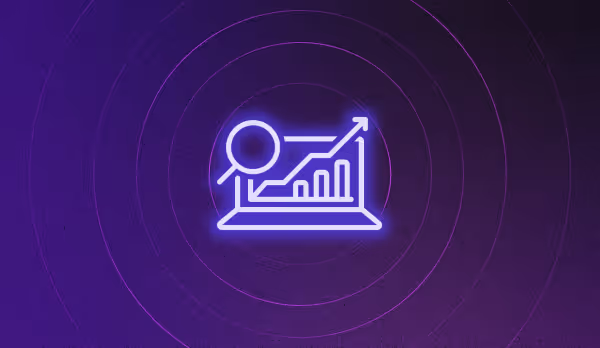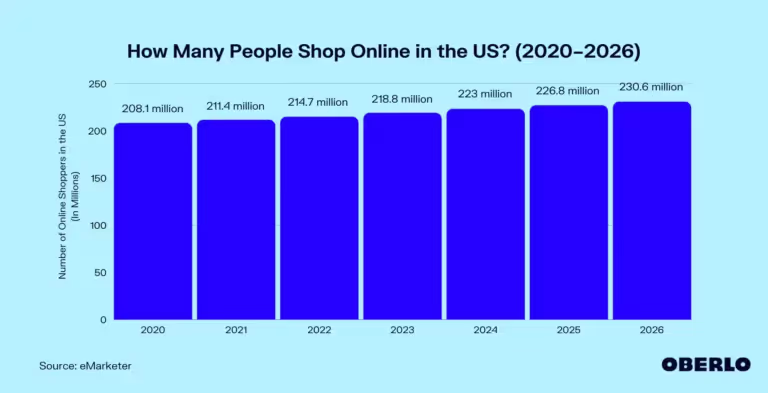Ecommerce analytics: How to use data to grow your sales


The ecommerce industry is living its golden years and there’s no doubt about that. As a matter of fact, retail ecommerce sales totaled roughly $5.7 trillion worldwide in 2022. Moreover, this number is projected to grow by 56% over the following years and reach about $8.1 trillion by 2026, speaking volumes about how rapidly the industry actually grows.
And while these numbers are quite promising, they also show that the competition for customers among ecommerce brands will only become more intense. To acquire new and retain current customers, optimize prices, improve efficiency and profitability, stand out in the sea of different ecommerce businesses, and ultimately increase their sales and revenue, companies will need to heavily rely on ecommerce analytics.
Keep reading to learn how you can use data and ecommerce analytics to grow your sales and why doing so is essential for your brand in 2023.
5 areas where ecommerce businesses can use analytics
Analytics for ecommerce involves collecting and analyzing relevant data to help ecommerce businesses gain an edge over their competitors. Then, companies can use this data to improve various aspects of the business, including customer acquisition and retention, logistics, and payments.
Acquisition
Analytics can help businesses understand how customers find them online, which products are most popular, which channels are driving the most conversions, and where their customers come from. This data can then be used to determine which marketing campaigns and channels to focus on.
Retention
Analytics can also provide valuable insights into customer retention, including the percentage of current customers who make repeat purchases, the average time between repeat purchases, and which product categories have the best customer satisfaction rates. This information can be used to encourage repeat purchases and increase revenue from existing customers.
Monitoring customer engagement with your company is another important use of sales data analytics. By tracking when a customer last visited your online shop, bought any products, or contacted your support team, you can prioritize any customers who haven’t been contacted for a while or any who are at risk of leaving.
Profitability
Analyzing product performance from previous transactions helps you spot when a product is on the up or quickly declining. Analytics can help you increase profitability by identifying cross-sell and upsell opportunities, segments of customers that drive high revenues, product pricing that has the best potential for conversions, as well as products that have the potential to improve margins.
Efficiency
Data can be used to improve operational efficiency by identifying ways to speed up delivery times, forecasting future demand, managing inventory more efficiently, and planning staffing levels during high and low-traffic phases.
ROI
Finally, understanding the performance of marketing campaigns on various channels, including pay-per-click ads and social media, can help you measure the ROI of each campaign and identify which campaigns have the best potential for scaling up.
This knowledge can then be used across various departments of an ecommerce business:
- Business and marketing departments can identify where to focus their resources and marketing budgets by acquiring insights on which marketing campaigns and channels are driving the most conversions, which products are popular, and where customers are coming from.
- Product departments can make better decisions by analyzing product performance from previous transactions. This includes valuable insights into customer behavior, shopping trends, and product performance, which all help identify which products are on the rise or decline and allow for better decisions regarding product development, pricing, and inventory management.
- Finally, technical departments can use data to identify areas of inefficiency in operational processes, which allows for better planning of staffing levels during high and low-traffic phases. Moreover, data can help streamline various customer service processes, reduce the number of tickets, and improve customer satisfaction by providing faster responses to customer inquiries.
4 advanced ways to use ecommerce analytics for sales growth

Analytics and data can sometimes be overwhelming, especially if you’re analyzing graphs and figures every day. And even when you understand what the numbers mean, it may not be completely clear how you can use them to increase sales figures.
Here are a few proven ways you can use analytics for boosting your ecommerce sales funnel.
Product recommendations
To cultivate customer loyalty, companies need to establish good relationships with customers. One effective tool for achieving this is a product recommendation engine, which utilizes machine learning algorithms to suggest items that a customer might be interested in. Recommendations can be delivered through a variety of channels, including websites, email campaigns, and online ads.
Market basket analysis
Market basket analysis is a technique that identifies the correlation between a pair or group of products that are frequently purchased together. In simpler terms, if a customer buys a product, they are more or less likely to buy another related product. This method also employs machine learning algorithms, similar to product recommendation engines.
Price optimization
Competitive pricing is one of the most important aspects of ecommerce shopping, so it's crucial to establish optimal prices that balance customer satisfaction with profit.
Let's take a look at three critical concepts related to price optimization:
- Segmentation of customers and products: This entails grouping similar products and customers, with the aid of classification and clustering algorithms. This information can be used to create targeted marketing campaigns, offer product bundles, or provide discounts to specific groups of customers.
- Regression modeling: After the segmentation process, regression models can be used to determine optimal product prices by analyzing sales data, conversion rates, seasonality, product attributes, marketing channels, and so on.
- Dynamic pricing: Dynamic pricing uses competitor data as input into machine learning algorithms to establish the product's price at various times. This allows products to remain competitive in the market despite frequent price fluctuations.
Through data analysis, you can optimize your pricing structure by seeing key financials for each product line from gross profit, costs, revenue, and quantities. This allows you to define the best value price for both you and your customers.
Demand forecasting
Another important use of data analytics for ecommerce is to predict customer behavior. By analyzing previous transactions, you can identify trends and patterns that help you anticipate future shopping behaviors, which is key to better time management, prioritization of key accounts, and creating realistic sales forecasts.
Demand forecasting involves using analytical techniques to forecast product demand and predict sales. When you know the sales trends in advance, you gain an advantage over your competitors by improving:
- Inventory management: Effective demand forecasting allows for informed inventory planning, which saves you from both selling out of popular products and unnecessary storage costs.
- Cash flow management: Additionally, it helps you plan your budget properly and utilize cash optimally, thus reducing financial risk.
- Pricing strategy: Finally, a better pricing strategy can be achieved by charging more for high-demand products and properly planning marketing budgets, advertising investments, and discount plans.
7 best practices to make the most out of your ecommerce data

It is estimated that as many as 218.8 million people will make an online purchase in the US alone in 2023. And if we’re to believe these predictions, this number will grow to 230 million in 2026.
This means that the ecommerce market is only becoming bigger, so you stand a good chance of capturing a share of it. However, as you already know, second-guessing is an absolute no-no in the world of business.
If you want to fully rely on ecommerce data analytics, here are seven best practices to follow:
- Start small. In the beginning, focus on the metrics that matter most to your business goals. Don't get overwhelmed by the sheer amount of data available.
- Build a robust system for collecting and organizing data. An integrated data stack that consolidates data from multiple sources into a single source of truth will improve data accuracy and enhance decision-making.
- Consider data quality. Ensure that your ecommerce analytics data is always accurate and reliable by using advanced analytics tools, regularly auditing data sources, and using data cleansing techniques.
- Use data ethically. Protect data privacy and security by being GDPR and CCPA-compliant, as well as only using collected data for its intended purpose.
- And use it optimally. Use analytics to measure performance, validate assumptions, find opportunities for improvement, test new strategies, and inform all business decisions. Moreover, it’s a good idea to share insights with stakeholders throughout the organization.
- Stay away from data silos. Centralize data from various sources to prevent misalignment between teams and obfuscated insights. Dashboards provide fast information on sales performance, enabling you to make better, informed decisions and take action more quickly.
- Automate. Automating tasks based on your sales data enables you to streamline your sales process, save time and improve efficiency. By automating routine tasks, such as creating reports and adding customer details to your calendar, you can focus on high-value activities that drive sales.
Current trends in ecommerce analytics

As ecommerce businesses evolve, new trends emerge in analytics that can help them stay ahead of the competition. Here are some of the latest trends in analytics for ecommerce that marketers are observing:
Focus on customer retention
Many ecommerce businesses are now focusing on customer retention by using analytics to predict customer behavior and offer personalized benefits. By identifying customer segments based on their purchasing habits, ecommerce companies can prioritize which customers to target with retention strategies.
Predictive analytics
Predictive analytics is being increasingly used to predict market trends and customer behavior. By using machine learning algorithms and historical data, ecommerce businesses can anticipate which products will be popular, which customers are most likely to buy and when, and the most effective marketing strategies.
Multichannel retail
Ecommerce brands are now utilizing multiple channels, including social media, websites, apps, email, WhatsApp, and even physical stores, to reach their potential customers. A sound strategy for managing, collecting, and utilizing data across all these channels is crucial.
AI and ML technologies
Using artificial Intelligence and machine learning for customer segmentation and personalization, businesses can deliver a more customized customer experience. They can also use sentiment analysis to understand customer feedback and build dynamic pricing for products to remain competitive.
Real-time analytics
Real-time analytics enables ecommerce businesses to quickly adjust their strategies in response to changing customer behavior and market conditions. This trend is critical for businesses that want to stay competitive and agile.
Final thoughts
From customer retention to real-time analytics and AI/ML technologies, the trends in ecommerce analytics are constantly evolving. To stay competitive and successful, you must keep up with these trends and invest in a robust analytics strategy that meets your unique business objectives.
By embracing the power of ecommerce data analytics, you can gain actionable insights that enable you to make data-driven decisions that can drive growth, improve customer engagement and ultimately increase sales. As a result, you will truly thrive in today's dynamic ecommerce landscape.




